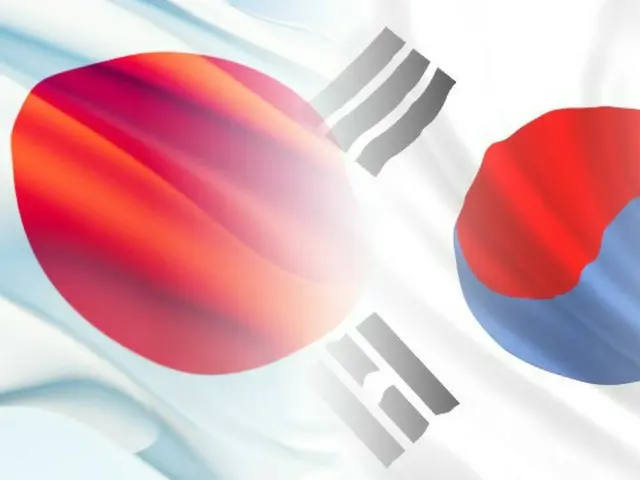A new discovery was made in the National Institute for Defense Studies' archives." This year marks the 100th anniversary of the Great Kanto Earthquake, but the Japanese government has avoided commenting on the atrocities that occurred amidst the chaos of the disaster, and has instead turned to the historical facts.
He didn't show his attitude. In August of this year, then-Chief Cabinet Secretary Hirokazu Matsuno said, ``There are no records within the government that would allow us to ascertain the facts.'' However, since the material was found, we reported this.
The Mainichi Shimbun pointed out, ``The existence of the documents shows that the government recognized the fact of illegal genocide immediately after the earthquake and is conducting an extensive investigation.''
The Great Kanto Earthquake occurred at 11:58 a.m. on September 1, 1923. The Tokyo metropolitan area and other areas were hit by violent tremors equivalent to the current magnitude of 7 or 6 on the Japanese scale.
Nearly 110,000 homes were completely destroyed, mainly in Tokyo and Kanagawa. Additionally, since the fires occurred at noon, multiple fires occurred at the same time, further exacerbating the damage. Building destroyed by fire
There are more than 212,000 buildings, of which 447,000 are residential units. More than 105,000 people died and went missing, making it the worst disaster in Japan since the Meiji era.
In addition to the damage caused by the earthquake itself, ``disaster rumors'' also became a problem. In the chaos caused by the earthquake, there were rumors such as ``Korean people rioting'' and ``poisoning the wells.''
Misinformation spread, and incidents occurred in which the military, police, and vigilante groups organized by civilians killed Koreans and Chinese people living in Japan. The exact victims of this incident called "Korean Massacre"
The number is unknown, but a report by the Cabinet Office's Central Disaster Prevention Council estimates it to be "1 to several percent" of the approximately 105,000 people who died in the earthquake. In addition, there are many people who question the facts surrounding this massacre.
There are also widespread discourses that define the past, and there are concerns about the fading and distortion of history. Meanwhile, a picture scroll that appears to have depicted the situation at the time of the massacre of Koreans was discovered, and the Goryeo Museum
It was exhibited to the public at the exhibition ``100 Years of the Great Kanto Earthquake: The Hidden Massacre of Koreans'' held in Shinjuku Ward, Tokyo from July 5th to the 24th of this month. The picture scroll is set in 1926, three years after the earthquake.
A two-volume ``Great Kanto Earthquake Picture Scroll'' drawn in 2007. In the first volume, there is a chronological depiction of people fleeing from their homes due to earthquakes or being caught up in fires, and there are people who appear to be Koreans.
There is a scene in which they are attacked by local soldiers with swords and bamboo spears, and are seen lying on the ground bleeding. The picture scroll says, ``I would like to show this to those who have not encountered this disaster, and ask them to be considerate.''
"I urge you to do so." ``I want the many people who did not experience this disaster to think twice about this,'' and it emphasizes the need to seriously face up to the tragic events that occurred immediately after the earthquake 100 years ago.
ing. However, the Japanese government is backward-looking, and in August of this year, then-Chief Cabinet Secretary Matsuno stated, ``There are no records within the government that allow us to ascertain the facts.'' At a House of Councilors committee held last month,
Opposition members asked questions about this statement one after another. Against this backdrop, on the 14th of this month, the Mainichi Shimbun reported that some materials from a fact-finding survey conducted by the Ministry of War at the time regarding the massacre of Koreans had been newly discovered.
Reported. According to the article, the report "Detailed Report on Operations Related to the Kanto Region Earthquake" prepared by the Kumagaya Regimental District Headquarters, a local army organization with jurisdiction over five districts in western Saitama Prefecture, states that protection
It is reported that more than 40 Koreans were being transported to a police station for the purpose of killing them, and that they were being ``killed to death'' by the murderous crowd. “Genocide of Korean people”, “illegal acts”, etc.
Expressions such as: There is also a statement that says, ``Finally, not a single person was attacked by the Koreans. No fires were lit. I never heard of poison being thrown (into the well).''
In response to this report, Korean media also quoted the Mainichi Shimbun article. The Hankyoreh said, ``Until now, the Japanese government had indicated that there were no records of the massacre of Koreans.''
It has become difficult to maintain this ambiguous position." JoongAng Ilbo said, ``On the 14th, an article that directly refutes the Japanese government's long-standing attitude of ``I don't know, I don't know'' was published in the Mainichi Shimbun electronic version.
It was published in.” JoongAng Ilbo interviewed Nobushi Watanabe, the journalist who discovered this material. According to the article, Watanabe told the paper, ``We need to make sure we understand why this happened.''
If we don't make it clear, the same thing will happen. I think what we need to do now is what to interpret from this material."
2023/12/26 11:33 KST
Copyrights(C)wowkorea.jp 5

